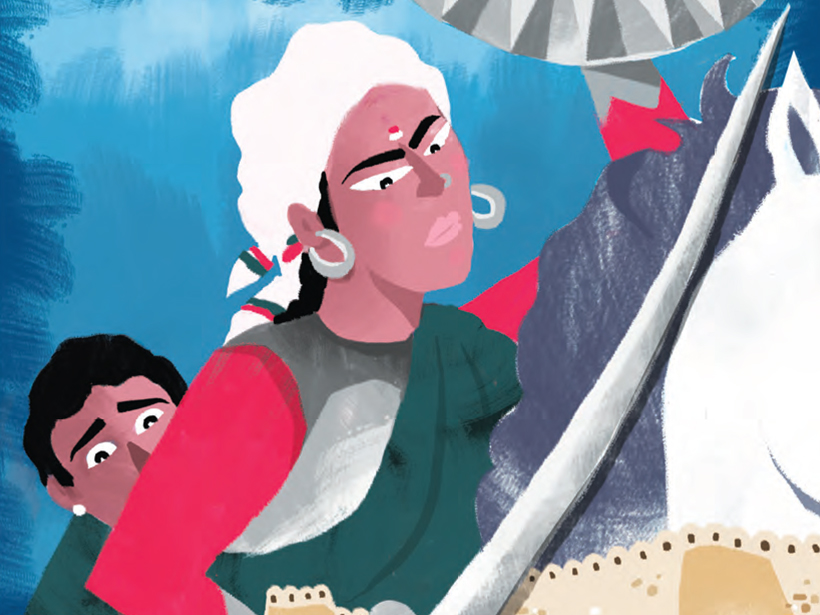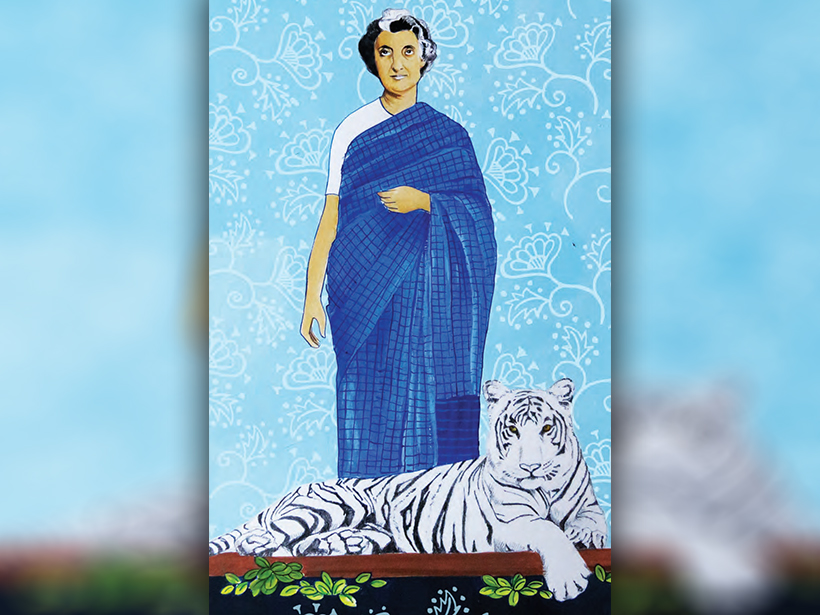Inspired by the runaway bestseller Good Night Stories for Rebel Girls, that author Aparna Jain pledged money on during its Kickstarter project, her book profiles 51 inspirational women who shaped India. She talks about Like a Girl: Real Stories for Tough Kids, published by Context, an imprint of Westland Publications, and why she tackles topics like rape, infanticide and gender fluidity, so far considered taboo for kids.
Is Like A Girl making a feminine statement? How important is it, as women, to know our history and of women who came before?
Feminism is many things. It means different things to everyone. For me, it is being inclusive of women, LGBTQIA people, people with mental health issues, people with disabilities, people who come from all marginalised communities and castes. It’s finding ways to make things more equal for the ones who are not treated fairly, equitably and equally.
“Like a girl” or “ladkiyon jaise” is used as an insult in our country and others. I wanted to change that and make the phrase, “like a girl” one of great accomplishment.
The inspirational profiles encourage young girls to take the story forward. Would you agree?
I don’t know about taking other people’s story forward, but certainly making one’s own.
What is the ideal age group for this book?
I think, for me, the ideal age group is 12 to 112. But I know parents whose nine-year-olds are devouring the book. Look, the fact is, it has just a few stories that are tough in terms of concepts. So, it is important for parents to get involved with explaining and discuss concepts with their kids. I think the youngest reader who the book is being read to is five years old; just a few stories, with some embellishment. About 90 per cent of the stories are simple.
My two nieces, aged 10 and 13 years, were a big part of this. I read every completed story to them, heard their questions, fleshed out the stories further and then read them final versions.
How relevant are historical icons like Chand Bibi and Rani Laxmibai to girls today?
We do learn about them in school. They did incredible feats for their time. The stories were short and factual. The fact that women have done incredible things for centuries was an important one.


It’s a clear-eyed approach to the world. Were you ever tempted to dilute the facts? For instance, in the case of rape victim and human rights crusader Bhanwari Devi, who is still awaiting justice after decades, or Soni Sori, “conscience keeper” who was raped during judicial remand.
Nope, I was in no doubt that I wanted to talk about the brutality and violence women face. I’m not sure why we feel we have to shy away from the most important icons of our times and what they went through. Rape, sadly, has entered headlines in a big way. Every child sees it. Children are at the receiving end of these vile acts.
As for our icon, Bhanwari Devi holds every woman in corporate India on her shoulder by way of the Vishakha judgement that was a fallout of her case. She hasn’t got justice and we are supposedly getting it every day. Can you imagine?
You have also addressed LGBTQ issues in a matter-of-fact way, whether it’s transgender mom Gauri Sawant’s sex assignment surgery or the chapter on Ritu Dalmia, where you say, “…Ritu was in love with a woman in India. So she moved back to Delhi…”
If you believe you are someone who is inclusive, you make LGBTQIA stories part of a child’s normal. Via stories, via meeting friends of the family, while refraining from talking about marriage only between binaries. You can start as early as you want. Why not? Isn’t it the new normal? Shouldn’t it be?


The women have shades of grey. The chapter on Indira Gandhi talks about her conflicted legacy, detailing Emergency and Operation Bluestar. Jayalalithaa’s legacy is also profiled as a formidable leader, who was every bit the corrupt politician. Is there a message here?
The message is that no one is perfect. These women did incredible things. They also were human and were influenced and did some shocking things. Why should children be told everyone is perfect? This obfuscation of the truth starts very young and then that’s what ends in this uneasy pressure on girls to be perfect. I don’t believe in that.
The book serves to introduce readers to social ills. Was that deliberate? For doctor-legislator Muthulakshmi Reddi, who struggled to attend classes because of her gender and the fact she was the daughter of a devadasi. In the chapter on rebel reformer Savitribai Phule, you’ve talked about how, “Infanticide or the killing of babies at birth was another age-old evil. If a woman gave birth after she became a widow, her baby was killed.”
Well, the icons were a choice, their stories about how they fought social ills was a part of it. I didn’t shy away from it. Why should we? These things continue to happen every day. It’s rather funny that people think they don’t.
Which are some icons you wanted as part of your list, but are missing due to various reasons?
Some were Shakuntala Devi, Arundhati Roy, Sakshi Mallick, Laila Tyabji along with the other founders of Dastkar. We even had the art ready for some, but the interviews didn’t happen.
What was Oxfam India’s contribution? How did you collaborate?
Oxfam was the art patron of the book and they were fantastic partners. They brought great suggestions of women to the table, connected me to some of the women too. They had the same gender agenda that I did. We wanted a diverse spectrum of women from all parts of the country. I got great feedback from them on the art, etc. It really worked quite seamlessly and I’m so happy they came on board.
Tell us about the illustrations. What was your brief for these?
Well, the brief was given by Ayesha Broacha, the art director. She wanted a modern contemporary “New Yorker” look. Nothing that looked like textbooks and rather recognisable faces too, not a vague representation. So, all the 26 women artists created according her brief. It was great to see new illustrations in our inbox for months.
A reading list at the end explains terms like caste, rape, prostitution, etc. How early should we start talking to kids about these?
Up to the parent. And the educator. I am comfortable talking about everything practically when I feel the child is a questioning, curious, open child and so is one’s family. The book is rated PG. So let each parent decide.
What’s next? When can we expect Volume 2?
Oh, the battle for the names on Book 2 has begun; more on that in a few months.
Any similar books you would recommend for children to read?
There are new independent publishing companies that are breaking gender stereotypes. One by two young girls called The Irrelevant Project. In addition, lots of young artists are doing gender positive zines. Of course, Tara Books, Pratham books and Katha books do some great stuff. Zubaan books, as we know, are all feminist.
Source: Read Full Article





